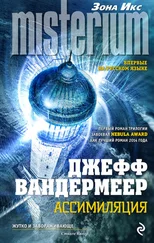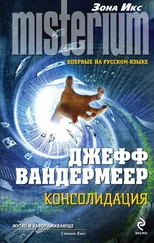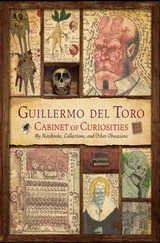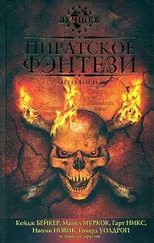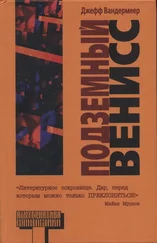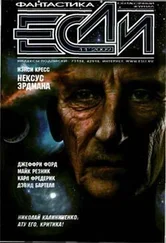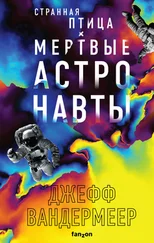Джефф Вандермеер - The Thackery T. Lambshead Cabinet of Curiosities
Здесь есть возможность читать онлайн «Джефф Вандермеер - The Thackery T. Lambshead Cabinet of Curiosities» весь текст электронной книги совершенно бесплатно (целиком полную версию без сокращений). В некоторых случаях можно слушать аудио, скачать через торрент в формате fb2 и присутствует краткое содержание. Жанр: Фэнтези, на английском языке. Описание произведения, (предисловие) а так же отзывы посетителей доступны на портале библиотеки ЛибКат.
- Название:The Thackery T. Lambshead Cabinet of Curiosities
- Автор:
- Жанр:
- Год:неизвестен
- ISBN:нет данных
- Рейтинг книги:5 / 5. Голосов: 1
-
Избранное:Добавить в избранное
- Отзывы:
-
Ваша оценка:
- 100
- 1
- 2
- 3
- 4
- 5
The Thackery T. Lambshead Cabinet of Curiosities: краткое содержание, описание и аннотация
Предлагаем к чтению аннотацию, описание, краткое содержание или предисловие (зависит от того, что написал сам автор книги «The Thackery T. Lambshead Cabinet of Curiosities»). Если вы не нашли необходимую информацию о книге — напишите в комментариях, мы постараемся отыскать её.
The Thackery T. Lambshead Cabinet of Curiosities — читать онлайн бесплатно полную книгу (весь текст) целиком
Ниже представлен текст книги, разбитый по страницам. Система сохранения места последней прочитанной страницы, позволяет с удобством читать онлайн бесплатно книгу «The Thackery T. Lambshead Cabinet of Curiosities», без необходимости каждый раз заново искать на чём Вы остановились. Поставьте закладку, и сможете в любой момент перейти на страницу, на которой закончили чтение.
Интервал:
Закладка:
Documented by Lev Grossman
Museum:Imperial War Museum, London
Exhibit:Military Miracles! Medical Innovation and the Great Wars
Category:Full-body prosthetic
Creator:Diverse hands, including Marcel Duchamp, Pablo Picasso, Thackery T. Lambshead, Adolf Hitler, and Andy Warhol
Medium:Stainless steel, rubber, enameled copper, textile
Sir Ranulph Wykeham-Rackham was born in 1877. As heir to the legendary Wykeham-Rackham wainscoting fortune, he was assured a life of leisure and privilege, if not any particular utility. But no one suspected that his life would still be going on 130 years later, after a fashion.
A brilliant student, he went up to Oxford at the age of sixteen and was sent down again almost immediately for drunkenness, card-playing, and lewdness. Given the popularity of these pastimes among the undergraduate body, one can only imagine the energy and initiative with which young Ranulph pursued them.
Although he had no artistic talent himself, Wykeham-Rackham preferred the company of artists, who appreciated his caustic wit, his exquisite wardrobe, and his significant annual allowance. He moved to London and rapidly descended into dissipation in the company of the members of the Aesthetes, chief among them Oscar Wilde. Wykeham-Rackham was a regular presence in the gallery during Wilde’s trial for gross indecency, and after Wilde’s release from prison, it is strongly suspected that wainscoting money bankrolled the elaborate ruse surrounding Wilde’s supposed death, and his actual relocation to a comfortable island in the remote West Indies where such advanced Victorian ideas as “gross indecency” did not exist.
The real Wilde died in 1914, leaving Wykeham-Rackham alone and feeling, at thirty-seven, that his era was already passing away. Pater and Swinburne and Burne-Jones and the other aesthetes were long gone. The outbreak of World War I further deepened his pessimism about the future of modern civilization. Rich, bored, and extravagantly melancholy, he enlisted in the Twenty-eighth Battalion of the London Regiment, popularly known as the “Artists Rifles,” because, as he said, he “liked the uniform, and hated life.” One can only imagine his surprise when the Artists Rifles were retained as an active fighting force and sent on a tour of the war’s most viciously contested battlefields, including Ypres, the Somme, and Passchendaele. All told, the Artists Rifles would sustain more personnel killed in World War I than any other British battalion.
But Wykeham-Rackham survived, and not only survived but flourished. He discovered within himself either an inner wellspring of bravery or a stylish indifference to his own fate—the line between them is a fine one—and, over the course of three years of trench combat, he was awarded a raft of medals, including the Military Cross for gallantry in the face of the enemy at Bapaume.
His luck ran out in 1918, during the infamous hundred-days assault on Germany’s Hindenburg line. Wykeham-Rackham was attempting to negotiate a barbed-wire barrier when a sharpshooter’s bullet clipped a white phosphorus grenade that he carried on his belt. White phosphorus, then the cutting edge of anti-personnel weaponry, offered one of the grimmest deaths available to a soldier in the Great War. In short order, the chemical had burned away much of Wykeham-Rackham’s lower body, from the hips down. As he writhed in agony, the German sharpshooter, evidently not satisfied with his work, fired twice more, removing the bridge of Wykeham-Rackham’s nose, his left cheekbone, and half his lower jaw.
But not, strangely, ending his life. The former dandy’s soul clung tenaciously to his ruined body, even as it was trundled from aid station to field hospital to Paris and then across the channel to London. There he became the focus of one of the strangest collaborations to which the twentieth century would bear witness.
At that time, the allied fields of prosthetics and cosmesis were being marched rapidly out of their infancy and into a painful adolescence in order to cope with the shocking wounds being inflicted on the human body by the new mechanized weaponry of World War I. Soldiers were returning from the battlefield with disfigurements of a severity undreamt of by earlier generations. When word of Wykeham-Rackham’s grievous injury reached his family, from whom he had long been estranged, rather than attend his bedside personally, they opted to send a great deal of money. It was just as well.
In short order, Wykeham-Rackham’s feet, legs, and hips had been rebuilt, in skeletal form, out of a new martensitic alloy known as stainless steel, which had
just been invented in nearby Sheffield. They were provided with rudimentary muscular power by a hydraulic network fashioned out of gutta-percha tubing. The whole contraption was then fused to the base of Wykeham-Rackham’s spine.
It was a groundbreaking achievement, of course, but not without precedent. The field of robotics did not yet exist—the word “robot” would not be coined till 1920—but the history of prosthetic automata went back at least as far as the sixteenth century and the legendary German mercenary Götz von Berlichingen, who lost his right arm in a freak accident when a stray cannonball caused it to be cut off with his own sword. The spring-loaded mechanical iron arm he caused to be built as a replacement could grip a lance and write with a quill. (Wykeham-Rackham was fond of quoting from Goethe’s Goetz von Berlichingen, based on von Berlichingen’s life, in which the playwright coined a useful phrase: “Leck mich am Arsch,” or, loosely, “Kiss my ass.”)
To replace Wykeham-Rackham’s shattered face, a wholly different approach was required. When he was sufficiently recovered from his first operation, Wykeham-Rackham was removed to Sidcup, a suburb of London, home to a special hospital dedicated to the care of those with grotesque facial injuries. It was an eerie place. Mirrors were forbidden. Throughout the town were placed special benches, painted blue, where it was understood that the townspeople should expect that anyone sitting there would present a gravely disturbing appearance.
Wykeham-Rackham’s old artist friends, those who were left, rallied around him. Facial reconstruction at that time was accomplished by means of masks. A plaster cast was made of the wounded man’s face, a process that brought the patient to within seconds of suffocation. The cast was then used to make a mask of paper-thin galvanized copper. Prominent painters competed with one another to produce the most lifelike reproduction of Wykeham-Rackham’s vanished features, which were then reproduced in enamel that was bonded to the copper.
In all, twelve such masks were produced, suitable for various occasions and displaying a range of facial expressions. On seeing them for the first time, Wykeham-Rackham held one up, like Hamlet holding up Yorick’s skull, and quoted from his old friend Wilde: “Man is least himself when he talks in his own person. Give him a mask, and he will tell you the truth .”
Following the end of the war, Wykeham-Rackham enjoyed a second heyday. His fantastical appearance made him the toast of the European avant-garde. A pioneer of kinetic sculpture, Marcel Duchamp was enraptured by Wykeham-Rackham, who agreed to be exhibited alongside Duchamp’s other “ready-mades”; he even allowed Duchamp to sign his steel calf with his distinctive “R. Mutt.” Man Ray photographed him. Cocteau filmed him. Stravinsky wrote a ballet based on his life, choreographed by Nijinsky.
Picasso created a special mask for him, a Cubist nightmare that he never wore. (Wykeham-Rackham remarked that Picasso seemed to have missed the point, as the mask was more grotesque than what lay beneath it, not less.) Prosthetics became increasingly fashionable, and not a few deaths and grievous injuries among the fashionable set were explained as attempts to reproduce Wykeham-Rackham’s distinctive “look.”
Читать дальшеИнтервал:
Закладка:
Похожие книги на «The Thackery T. Lambshead Cabinet of Curiosities»
Представляем Вашему вниманию похожие книги на «The Thackery T. Lambshead Cabinet of Curiosities» списком для выбора. Мы отобрали схожую по названию и смыслу литературу в надежде предоставить читателям больше вариантов отыскать новые, интересные, ещё непрочитанные произведения.
Обсуждение, отзывы о книге «The Thackery T. Lambshead Cabinet of Curiosities» и просто собственные мнения читателей. Оставьте ваши комментарии, напишите, что Вы думаете о произведении, его смысле или главных героях. Укажите что конкретно понравилось, а что нет, и почему Вы так считаете.

